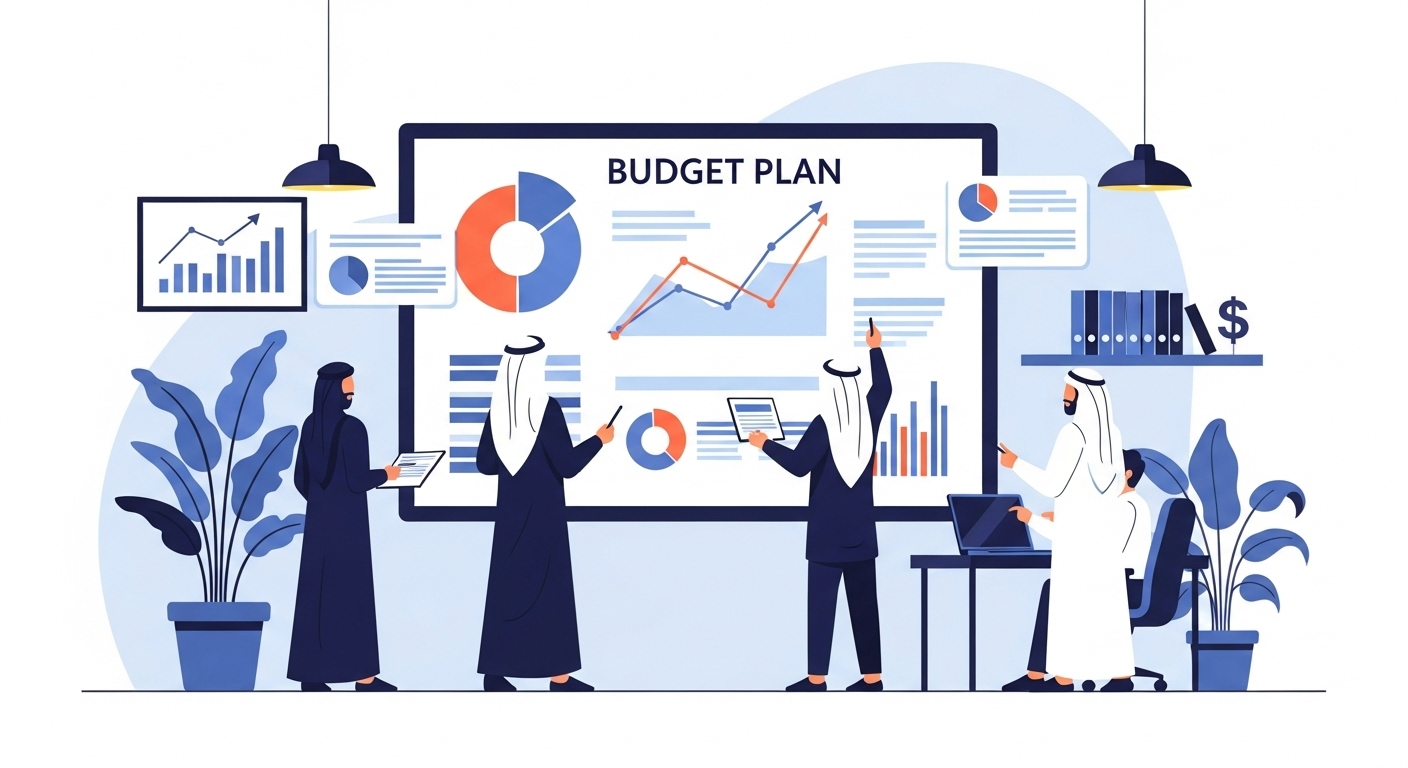In today’s dynamic business environment, preparing an estimated budget for sales is a critical step toward achieving success and excellence in a volatile and competitive market. Imagine having a roadmap that guides you toward sustainable growth by combining detailed analyses of historical data with realistic future forecasts—supported by advanced tools such as the ERP Daysum system, which streamlines and efficiently manages financial operations. In this comprehensive guide, we will take you on a practical journey that transforms challenges into opportunities, equipping you with the strategies and tools needed to develop an estimated budget that reflects your company’s vision and ambitious goals.
Simplify your workflow and stay compliant with zatca e-invoicing from Daysum.
1. Preparation and Planning
Identifying Strategic Objectives:
Begin by setting key objectives based on your company’s vision and future plans, such as increasing market share or achieving a specific growth rate. These goals can be further refined through integration with ERP Daysum, which offers precise analytical reports.
Collecting and Analyzing Historical Data:
Review past sales data and analyze seasonal trends along with market and competitor influences. Utilizing ERP Daysum at this stage is crucial for efficiently gathering and processing data, laying a solid foundation for your estimated budget.
2. Establishing Assumptions and Estimates
Defining Economic and Market Assumptions:
Determine the assumptions that will underpin your estimates, such as the expected growth rate, while considering the current economic environment and market fluctuations. Linking these assumptions with data from ERP Daysum enhances forecast accuracy and helps in formulating a reliable estimated budget.
Estimating Future Sales Volume:
Using historical data and your established assumptions, estimate the anticipated sales volume for the upcoming period (monthly, quarterly, or annually). ERP Daysum’s analytics provide more precise and detailed predictions, which are essential for crafting your estimated budget.
3. Developing the Budget Model Using Tools like Excel and ERP Daysum
Designing the Financial Model:
Create a financial model using tools such as Excel or directly through ERP Daysum to streamline data entry and comprehensive analysis. The model should include columns for:
-
- Time periods (months/quarters)
-
- Estimated sales volume (units or monetary value)
-
- Expected prices
-
- Seasonal adjustments and period-specific factors
This model serves as the framework for your estimated budget and ensures all relevant data is organized effectively.
Data Entry:
Input all estimates and assumptions into your model, ensuring calculation accuracy. Leverage ERP Daysum’s features for verification and review to maintain precision in your estimated budget.
4. Sales Distribution and Periodic Adjustments
Allocating Sales Across Time Periods:
Based on historical performance and seasonal trends, distribute the total annual sales over appropriate periods. Utilize ERP Daysum’s tools to pinpoint high-performing periods and adjust the estimated budget accordingly.
Reviewing and Aligning Plans:
Ensure that your estimates are in sync with production and marketing plans. Adjust the figures as needed to maintain consistency across departments, and use ERP Daysum reports to review performance and update the estimated budget when necessary.
5. Reporting and Review
Preparing the Final Report:
Once your model is complete, compile a detailed report that includes:
-
- A summary of the objectives and assumptions
-
- The time-based distribution of sales
-
- An analysis of gaps and potential discrepancies
ERP Daysum data can be instrumental in creating comprehensive, accurate reports for management, reinforcing the importance of your estimated budget.
Periodic Review and Updates:
Establish a routine for regular reviews to ensure objectives are met and to monitor market changes. This allows for timely updates to the estimated budget using ERP Daysum tools, ensuring data accuracy at every stage.
Practical Example
Company X recorded $1,000,000 in sales last year. Based on market analysis and growth forecasts, a 10% increase is assumed for the coming year, setting a target of $1,100,000.
-
- Defining Objectives:
-
- Target a 10% growth rate.
-
- Defining Objectives:
-
- Collecting Data:
-
- Use the previous year’s data to identify peak performance periods.
-
- Collecting Data:
-
- Developing the Model:
-
- Distribute $1,100,000 over 12 months, considering that certain months (e.g., during the holiday season) yield higher sales, while leveraging ERP Daysum to organize the data.
-
- Developing the Model:
-
- Review:
-
- Compare the distribution with production and marketing plans and adjust the model based on feedback from the involved teams.
-
- Review:
-
- Reporting:
-
- Prepare a comprehensive report for management to discuss the results and potential future adjustments, ensuring the estimated budget remains on track.
-
- Reporting:
Key Benefits of Preparing an Estimated Budget
-
- Clarity of Vision:
Establish precise objectives based on actual data and realistic assumptions, supported by ERP Daysum to enhance transparency in your estimated budget.
- Clarity of Vision:
-
- Consistency of Plans:
Ensure coordination among various departments (sales, production, marketing) to achieve targeted performance, bolstered by ERP Daysum’s analytical tools.
- Consistency of Plans:
-
- Flexibility:
Enable periodic adjustments in response to market changes to keep the estimated budget relevant and effective.
- Flexibility:
-
- Monitoring and Control:
Generate regular reports that measure performance and compare actual results against estimates, using ERP Daysum systems for meticulous tracking.
- Monitoring and Control:
-
- Enhanced Decision-Making:
Provide analytical data that supports sound financial and strategic decisions, strengthening the overall impact of your estimated budget.
- Enhanced Decision-Making:
With these steps and advanced features offered by ERP Daysum, preparing an estimated budget for sales becomes a systematic process that ensures precise financial planning and adaptability to market changes, ultimately driving your company’s strategic objectives forward.
Start your journey toward financial clarity and sustainable growth today with ERP Daysum and your well-crafted estimated budget!




